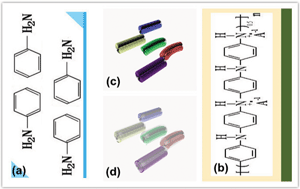Self-assembled hierarchical graphene@polyaniline (PANI) nanoworm composites have been fabricated using graphene oxide (GO) and aniline as the starting materials. The worm-like PANI nanostructures were successfully obtained via a simple polymerization route. The graphene-wrapped hierarchical PANI nanoworm structures could be prepared using a three-step process by dispersing the PANI nanoworms sequentially into the relevant solution. The morphologies and microstructures of the samples were examined by X-ray diffraction (XRD), scanning electron microscopy (SEM), transmission electron microscopy (TEM), X-ray photoelectron spectroscopy (XPS) and Raman spectroscopy. Electrochemical properties were also characterized by cyclic voltammetry (CV) and galvanostatic charge–discharge. The results indicated that the integration of graphene and the worm-like PANI nanocomposites possessed excellent electrochemical properties. These hierarchical worm-like graphene@PANI nanostructures could afford an interconnected network with a lot of well-defined nanopores, and further provided more active sites and excellent electron transfer path for improving the electric conductivity as well as good mechanical properties. Supercapacitor devices based on these self-assembled nanocomposites showed high electrochemical capacitance (488.2 F g−1) at a discharge rate of 0.5 A g−1, which also could effectively improve electrochemical stability and rate performances.
